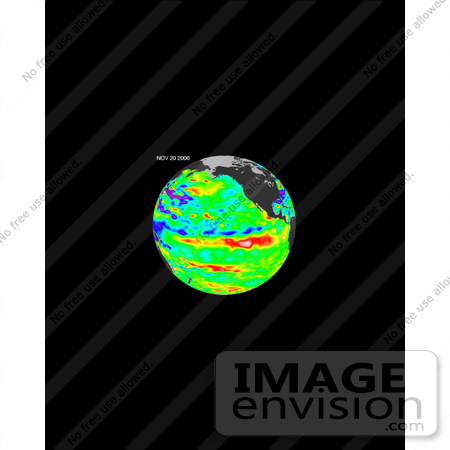

|
Recent sea-level height data from the Jason-1 altimetric satellite show that continuing weaker-than-normal trade winds in the western and central equatorial Pacific have triggered another strong, eastward moving, warm Kelvin wave. In the eastern equatorial Pacific, this "warm wave" appears as the large area of higher-than-normal sea surface heights (warmer-than-normal sea surface temperatures) between 140 degrees W and 110 degrees W. A series of these types of events that began in August 2006 have contributed to the present El Nino condition. “In the American west where we are struggling under drought conditions, we welcome this modest, potentially rain-delivering El Nino,” said JPL oceanographer Dr. Bill Patzert. "The Jason-1 measurements are being used by several teams of international scientists to study the physics of El Nino to improve our ability to predict future events," said Dr. Lee-Lueng Fu, JPL Jason-1 project scientist. This image was created with data collected by the U.S./French satellite during a 10-day period centered on November 20, 2007. It shows a red area in the eastern equatorial Pacific that is about 10 centimeters (4 inches) above normal. These regions contrast with the western equatorial Pacific, where lower-than-normal sea levels (blue areas) continue that are between 5 and 13 centimeters (2 and 5 inches) below normal. Along the equator, the red sea surface heights equate to sea surface temperature departures greater than one to two degrees Celsius (two to four degrees Fahrenheit). This Jason-1 image shows sea surface height anomalies with the seasonal cycle (the effects of summer, fall, winter, and spring) and trend removed. The differences between what we see and what is normal for different times and regions are called anomalies, or residuals. When oceanographers and climatologists view these "anomalies" they can identify unusual patterns and can tell us how heat is being stored in the ocean to influence future planetary climate events. Photo Credit: NASA/JPL Ocean Surface Topography Team [0003-0612-3114-4207] by 0003
|
Keywords
earth, earth science, el nino, environment, environmental, global warming, jason 1, jason1, jason1 altimetric satellite, jpl, kelvin wave, nasa, science, south america, warm kelvin wave, warm kelvin wave surges toward south america
|
|











